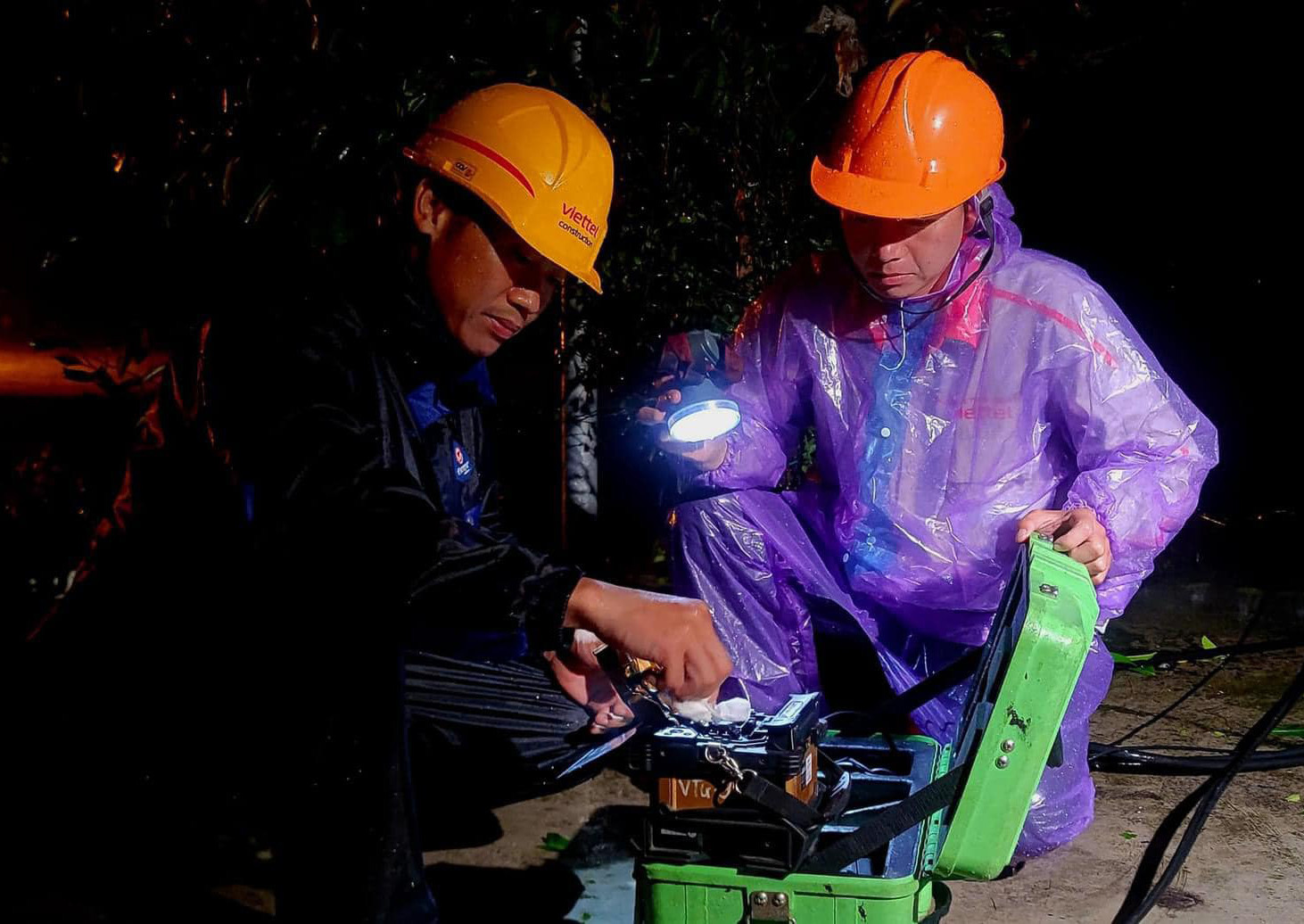
According to the Ministry of Information and Communications (MIC), Storm Yagi significantly impacted telecommunications infrastructure, causing seven inter-provincial fiber optic cables and 12 intra-provincial transmission lines to be severed.
The storm also led to the collapse of 27 mobile towers across Hai Phong and Quang Ninh, with VNPT losing 23 towers and Vietnamobile losing four.
In total, 6,285 mobile base stations were affected by power outages, leading to localized communication blackouts across 15 provinces and cities.
Immediately after the storm passed, the MIC issued directives to the telecommunications companies, urging them to focus on restoring communication services as quickly as possible. The Telecommunications Department has also been coordinating with the Ministry of Industry and Trade and the Electricity of Vietnam (EVN) to expedite power restoration to these critical areas.
As of September 9th, the damaged backbone and inter-provincial transmission lines have been repaired, though some branch fiber optic cables remain inaccessible due to flooding and isolation in certain regions.
In the two days following the storm, telecom companies managed to bring over 3,000 mobile base stations back online using portable generators. However, an additional 3,275 stations remain offline, with the majority located in Quang Ninh, Hai Phong, Hai Duong, Bac Ninh, and Bac Giang provinces. The MIC continues to monitor the situation closely and is working with telecom providers to address these outages.
In an effort to further stabilize communication services, the ministry has directed telecom companies to prioritize the repair of mobile base stations located along the coast, particularly those that provide essential communications for search and rescue operations at sea.
Resources from unaffected provinces have been mobilized to assist those hardest hit by the storm, with particular attention given to fixed broadband subscribers who are facing prolonged service disruptions.
The ministry has also instructed telecom companies to continue using generators in areas without power and to dispatch additional materials, equipment, and fuel from less-affected regions to support restoration efforts.
Mobile broadcast vehicles have been deployed to provide temporary communication services in areas where mobile towers have collapsed.
In addition, telecom companies are required to implement roaming agreements to ensure that customers in areas with network outages can continue to access mobile services through other providers.
The sharing of technical infrastructure and equipment among telecom providers is being encouraged to speed up recovery efforts.
The MIC has urged the government to instruct EVN to restore grid power as soon as possible in areas that remain without electricity, emphasizing the importance of providing power to base stations to fully restore communication services.
Local authorities have also been asked to facilitate access for emergency response teams to isolated areas to repair damaged infrastructure.
The recovery of telecommunications services is a top priority, as communication networks are essential for coordinating relief efforts and ensuring public safety in the aftermath of the storm.
Thai Khang